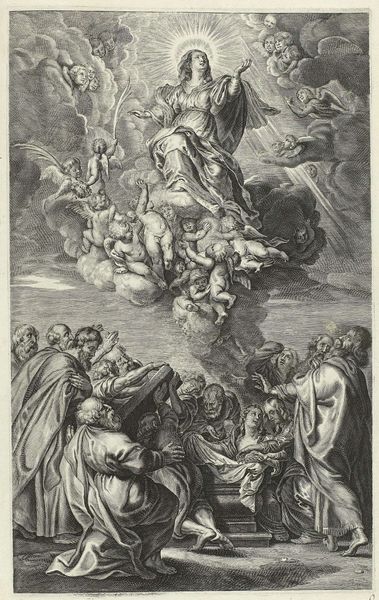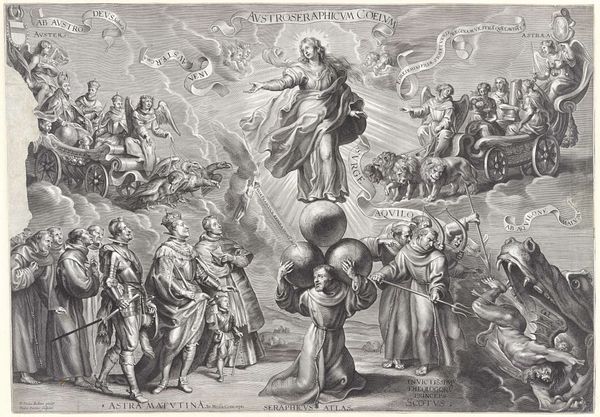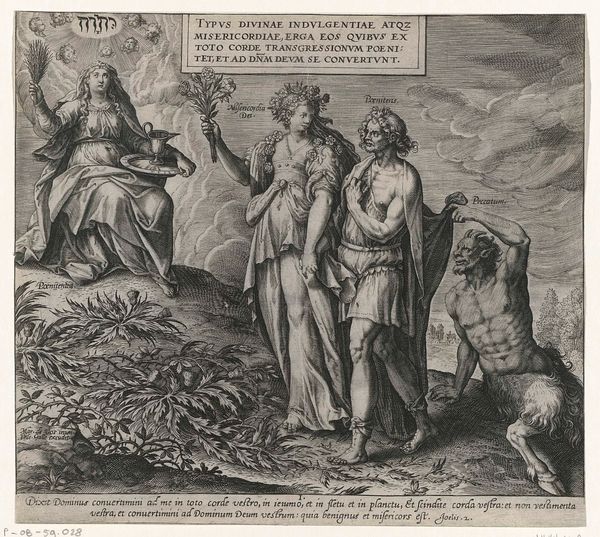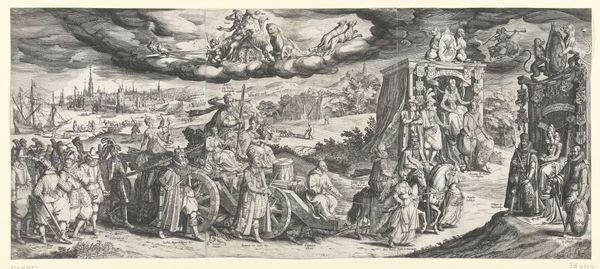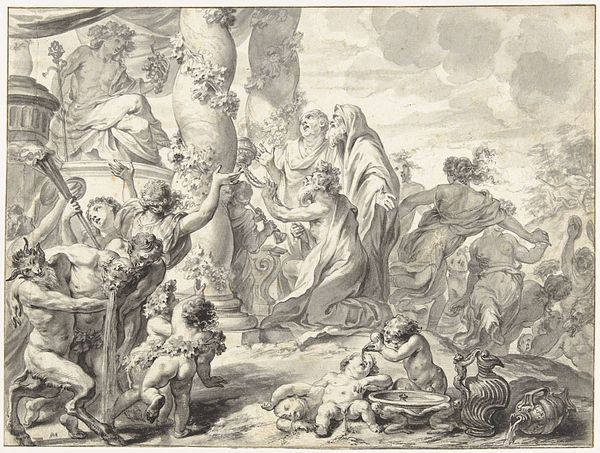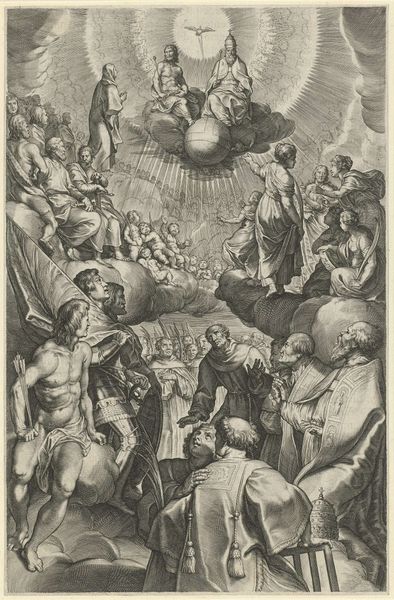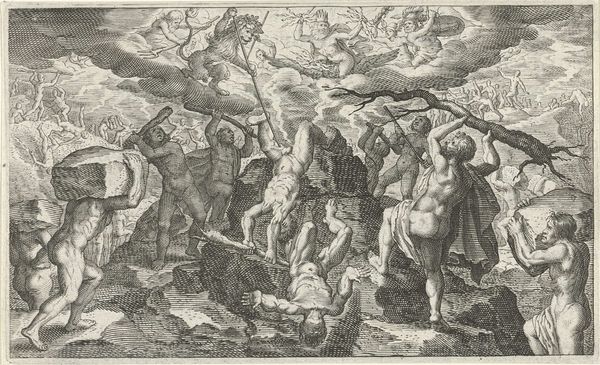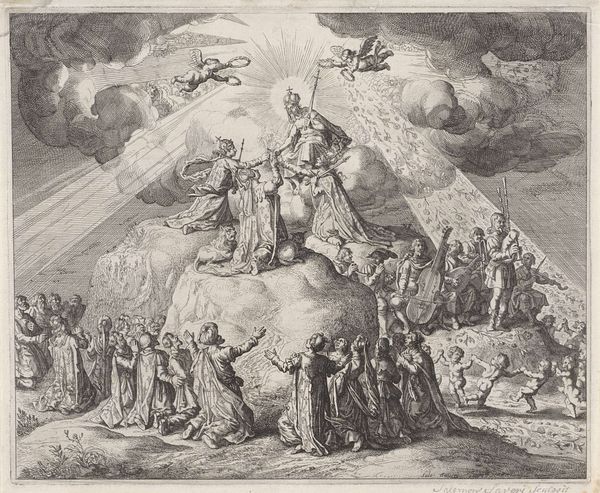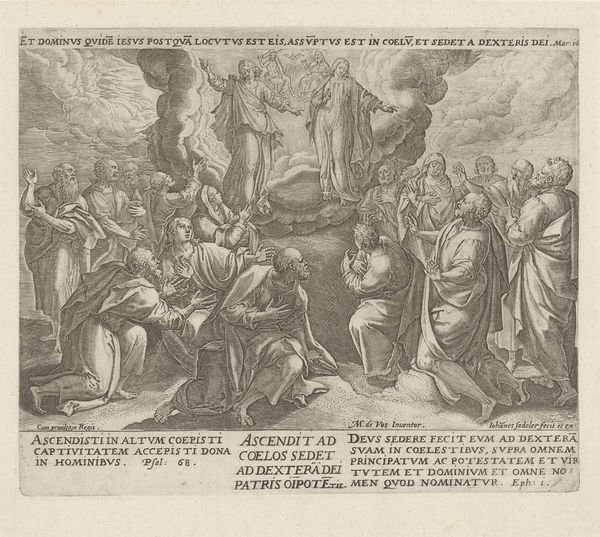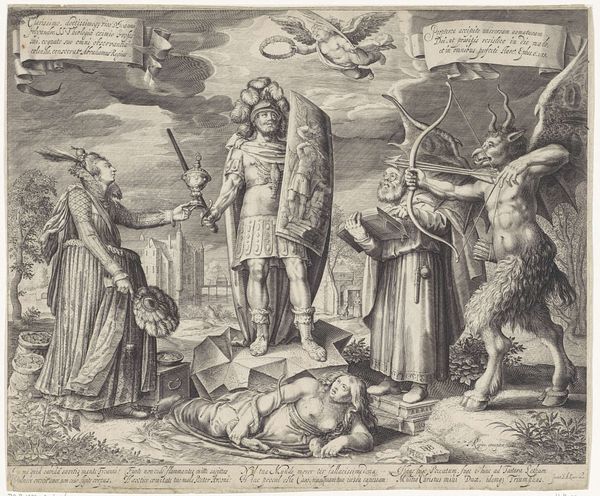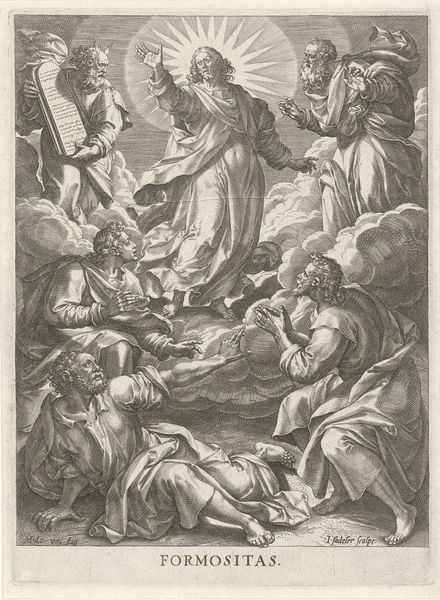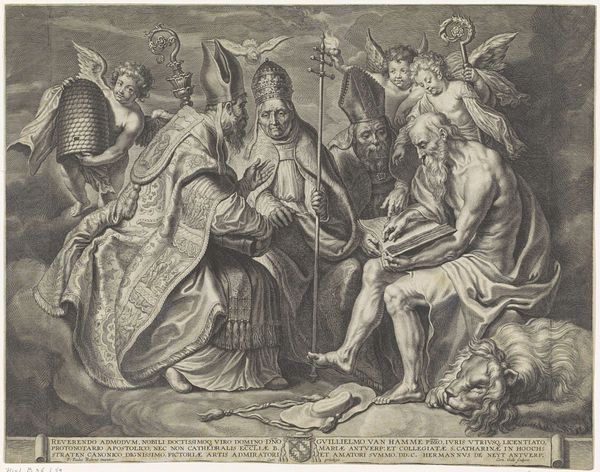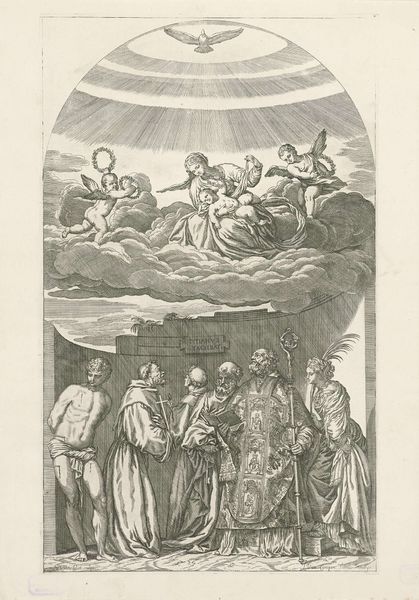
Gelijkenis van de vijf wijze en de vijf dwaze maagden, vergezeld door de drie goddelijke deugden before 1620
0:00
0:00
wierix
Rijksmuseum
#
pencil drawn
#
light pencil work
#
pencil sketch
#
personal sketchbook
#
sketchwork
#
pen-ink sketch
#
sketchbook drawing
#
pencil work
#
sketchbook art
#
initial sketch
Dimensions: height 362 mm, width 478 mm
Copyright: Rijks Museum: Open Domain
Editor: This intricate drawing by Wierix, titled "Gelijkenis van de vijf wijze en de vijf dwaze maagden, vergezeld door de drie goddelijke deugden," dates back to before 1620 and is now at the Rijksmuseum. It seems to depict a very hierarchical and theatrical scene. What stories do you see within its layered composition? Curator: It’s fascinating how Wierix stages this biblical parable. Notice the distinct zones: the earthly city versus the heavenly realm, wise versus foolish. This division isn't just aesthetic. It mirrors the rigid social hierarchies of the time and speaks to the power structures upheld by religious dogma. Editor: It almost feels like the women are props, each playing their assigned role, but stripped of agency. Curator: Exactly! Consider how these figures might resonate with contemporary feminist readings of power and representation. Who is dictating the roles? Whose narrative are we seeing? And how does that influence our understanding of faith and morality, especially regarding gender roles? It also highlights the period's obsession with social conduct as tied to religious virtue. Editor: So the art becomes a mirror reflecting the pressures and expectations placed upon women within this society. Curator: Precisely! The ‘wise’ virgins almost represent the ideal woman; modest and obedient. But perhaps this artwork reveals just how impossible this ideal was to reach and the societal ramifications of falling short. What do you think of the role of class? Do you think all women faced equal stakes within these societal constructs, regardless of class? Editor: Class would definitely have shaped these "virtues." Thanks for shedding light on its social and historical undertones! Curator: It’s in these intersections of faith, gender, and social standing that the artwork gains a new and politically charged relevance for today.
Comments
No comments
Be the first to comment and join the conversation on the ultimate creative platform.

